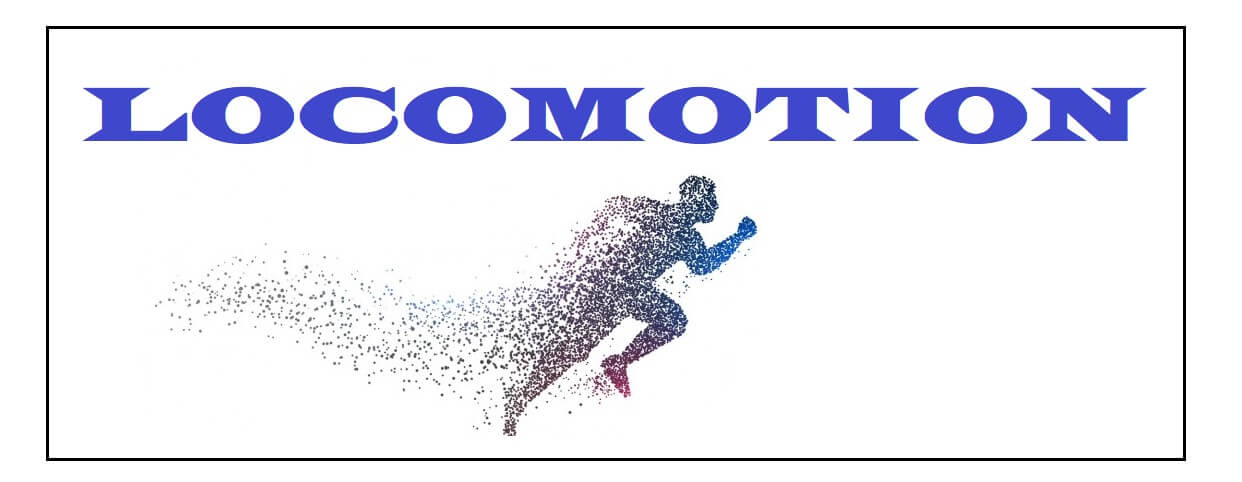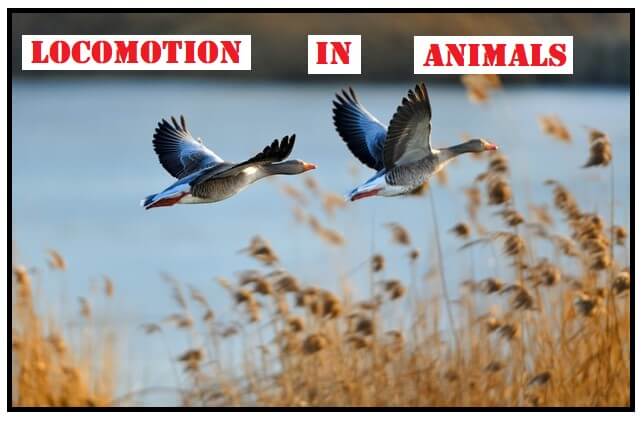What is Locomotion?
All the living beings residing in this world possess a unique, distinctive feature of transferring the body or a part from one location to another.

Locomotion
Locomotion is defined as the act or ability of any living being to transfer or move from one location to another. Different types of motions like swimming, jumping, walking, running, etc., performed by the body are termed locomotion.
In simpler terms, locomotion is defined as the movement of an organism from one location to another. In this entire process, the action of various other body parts is also involved, such as limbs (two for humans and four for animals), wings, and flagella. Some aquatic animals such as fish, whales, and sharks make the locomotory motion with the help of a wave-like sequence of muscle contractions and relaxations. Locomotion assists an organism in finding food, tasking shelters for severe weather conditions, etc.
Locomotion in Humans
Movement is considered one of the significant attributes of all living beings. Locomotion assists living organisms in moving from place to place. Generally, in search of food, shelter, and defense, animals need locomotion.
The coordinated movement of various joints, tissues, and bones such as tendons, cartilage, muscles, ligaments, and bones, etc., is termed Locomotory movement.
Types of Muscles in the Human Body
On the basis of extensibility, contractibility, excitability, and elasticity, the human body consists of three types of muscles. These are explained as follows:
1. Skeletal Muscles
Skeletal muscles are located under the human body’s control. Usually, these muscles are present in various parts of the body like the face, legs, neck, body wall, etc. Also, skeletal muscles are found fixed to bones with the help of tendons. The tendons support the movement. They are striated muscle fibers. Skeletal muscles voluntary (controlled by a human) in nature.
2. Smooth Muscles
Smooth muscles are regulated by the human nervous system. These smooth muscles are made of a non-striated, thin type of tapering fibers. Smooth muscles are located in the internal walls of organs, unlike the reproductive block, blood vessels, tubes, etc. Smooth muscles are involuntary (not controlled by humans) in nature.
3. Cardiac Muscles
The cardiac muscles are made of muscle fibers usually found in the human body in short and striated form. These muscles are present in the form of the branch and are located in an organism's heart. Cardiac muscles are involuntary (not controlled by humans) in nature.
Skeletal System in Human Body
The skeletal system of any organism imparts the structural framework to its body and contributes to its body shape. The skeletal system also plays an essential role in protecting the delicate internal organs. The prime function of the skeletal system is to assist the organism in locomotion or movement.
Skeletal System and Locomotion
- Human skeletal system performs an indispensable part in locomotion and movement. The coordinated move of various skeletal muscles, tissues, bones, ligaments assists in locomotion.
- The skeletal system gives a precise shape and posture to human beings.
- They impart a fundamental framework of the human body.
- It protects sensitive human organs such as the spinal cord, Human brain, heart, and various other internal parts.
- It helps the organism in the locomotory move from one location to another.
- The human skeletal system also assists in the breathing method by moving the sternum and the ribs.
Animal locomotion
Human beings are confined to earthly locomotion on their limbs (two) or swimming (aquatic locomotion) with all four limbs. However, the animal kingdom traverses both the aquatic and terrestrial landforms more widely. For instance, birds are born swimmers and fliers. However, there is specific bird specifies who are neither good at swimming nor flying. One such species with restricted flight capabilities is penguins. Another reference of birds is from an extinct family, i.e., Hesperirnithformes. They were like penguins with only a difference that they can't swim as well and only had defined access to locomotion on land.

Difference Between Locomotion and Movement
Locomotion and movement are the most commonly used keyword in the study of motion and essential traits used to distinguish between living and non-living things. All living species, except plants, move and relocate from one location to another in search of employment, food, house, escape predators, and several other purposes. Though people use the terms Locomotion and movement interchangeably but scientifically, they are different from each other.
| Locomotion | Movement |
| Locomotion is the process of transporting from the original position to another in search of food, shelter, protection, etc. | Movement does not involve the changing of position. It can occur with or without moving from one location to another. |
| Locomotion is a voluntary motion i.e., it is done willingly by the organism. | Movement is not fixed, i.e., it can be either voluntary or involuntary. |
| This process happens at the individual level. | This process happens at the biological level. |
| The process of Locomotion doesn’t always necessitate energy. | The process of movement always requires energy. |